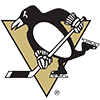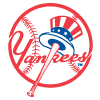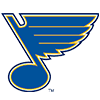It's said a rolling stone gathers no moss, but moss can be good to the fantasy gamer, in the sense of "boring" predictability based on a cleaner (yet often less impressive) track record. Let's say that a team started with Strasburg and Carrasco as the top two pitchers on staff, then suddenly a mossy rock (a Jose Quintana type) looks much more attractive. Other teams will be looking for risk/reward, the type of player that could vault up the rankings during the season but whose draft-day cost is discounted due to warts of uncertainty. Due to the nature of this ranking system there will be disparity at the top in terms of points, but those with single, specific weaknesses will fall into a bin around 32-34 points. The perceived value of these players might match up to a certain point value, but their impact on specific stat categories can vary widely. This is why I find it necessary to begin sub-grouping players as we head into the fatter part of the bell curve of the fantasy pitcher population, so that preferences can be tailored to individual team need.
With this in mind, I'm changing the approach a bit. Instead of going through the rankings in the order of NFBC ADP I'm going to go in order of DT Rank, because now that the points are clustering we get to throw some more personal preference into the mix. The value of the pitchers in this cohort will vary widely among fantasy
It's said a rolling stone gathers no moss, but moss can be good to the fantasy gamer, in the sense of "boring" predictability based on a cleaner (yet often less impressive) track record. Let's say that a team started with Strasburg and Carrasco as the top two pitchers on staff, then suddenly a mossy rock (a Jose Quintana type) looks much more attractive. Other teams will be looking for risk/reward, the type of player that could vault up the rankings during the season but whose draft-day cost is discounted due to warts of uncertainty. Due to the nature of this ranking system there will be disparity at the top in terms of points, but those with single, specific weaknesses will fall into a bin around 32-34 points. The perceived value of these players might match up to a certain point value, but their impact on specific stat categories can vary widely. This is why I find it necessary to begin sub-grouping players as we head into the fatter part of the bell curve of the fantasy pitcher population, so that preferences can be tailored to individual team need.
With this in mind, I'm changing the approach a bit. Instead of going through the rankings in the order of NFBC ADP I'm going to go in order of DT Rank, because now that the points are clustering we get to throw some more personal preference into the mix. The value of the pitchers in this cohort will vary widely among fantasy pundits, so rather than having an NFBC tour guide to take us through the first round, we now must lead ourselves through the next run of pitchers - the backend SP2s, SP3s (under 15-team league) and beyond.
A quick review:
Introduction to the ratings
Rating NFBC SP 1-10
Rating NFBC SP 11-21
We'll start with a pair of 34-pointers, tying them with top-20 targets Jacob deGrom and Masahiro Tanaka, and both players carry the same fundamental flaw as Tanaka when it comes to fantasy stats: a pedestrian K rate.
Julio Teheran
NFBC ADP: 26
DT Rank: 19
| K | 6 of 10 |
| ERA | 4 of 6 |
| WHIP | 5 of 6 |
| W | 2 of 3 |
| IP | 7 of 10 |
| Stuff | 4 of 8 |
| Mechanics | 6 of 7 |
| TOTAL | 34 of 50 |
Jose Quintana NFBC ADP: 23 DT Rank: 22| K | 6 |
| ERA | 4 |
| WHIP | 4 |
| W | 2 |
| IP | 8 |
| Stuff | 5 |
| Mechanics | 5 |
| TOTAL | 34 |
With the 34-point players behind us, we head into a wide swath of pitchers who earn 33 points on the ranking system. Up until this point, no more than four pitchers had been tied in point value, but as we head closer to the average fantasy pitcher the point assignments become more crowded. There are eight players who earn the Rolling Rock special with 33 points, and a squad's preference could well come down to team needs and player profiles.
I'm a sucker for big K rates, and at this point in the draft I am looking for high-quality innings even if those innings come in short supply, so the first 33's on my list are those who might struggle to get frames under their belt but who are projected to be especially strong in the rate categories during those innings. The goal is to get a pair of these pitcher types, realistically viewing the tandem as one, 250-inning stud. Invest accordingly.
Gerrit Cole
NFBC ADP: 24
DT Rank: 23
| K | 7 |
| ERA | 4 |
| WHIP | 4 |
| W | 2 |
| IP | 4 |
| Stuff | 6 |
| Mechanics | 6 |
| TOTAL | 33 |
Danny Salazar NFBC ADP: 29 DT Rank: 24| K | 8 |
| ERA | 4 |
| WHIP | 3 |
| W | 2 |
| IP | 5 |
| Stuff | 6 |
| Mechanics | 5 |
| TOTAL | 33 |
Rich Hill NFBC ADP: 30 DT Rank: 26| K | 9 |
| ERA | 5 |
| WHIP | 5 |
| W | 2 |
| IP | 2 |
| Stuff | 5 |
| Mechanics | 5 |
| TOTAL | 33 |
Lance McCullers NFBC ADP: 42 DT Rank: 28| K | 9 |
| ERA | 4 |
| WHIP | 3 |
| W | 2 |
| IP | 3 |
| Stuff | 6 |
| Mechanics | 6 |
| TOTAL | 33 |
Julio Urias NFBC ADP: 45 DT Rank: 29| K | 8 |
| ERA | 4 |
| WHIP | 4 |
| W | 2 |
| IP | 4 |
| Stuff | 6 |
| Mechanics | 5 |
| TOTAL | 33 |
Before I get to the upside-down of the number 33, let's look at the demogorgon who's guarding the space between:
Felix Hernandez
NFBC ADP: 31
DT Rank: 25
| K | 6 |
| ERA | 4 |
| WHIP | 4 |
| W | 2 |
| IP | 8 |
| Stuff | 4 |
| Mechanics | 5 |
| TOTAL | 33 |
Finally, the 33-point crew includes a couple of guys who should post tidy ratios but won't push toward any K titles.
Kenta Maeda
NFBC ADP: 25
DT Rank: 27
| K | 7 |
| ERA | 4 |
| WHIP | 5 |
| W | 2 |
| IP | 6 |
| Stuff | 4 |
| Mechanics | 5 |
| TOTAL | 33 |
Jameson Taillon NFBC ADP: 35 DT Rank: 30| K | 6 |
| ERA | 4 |
| WHIP | 5 |
| W | 2 |
| IP | 6 |
| Stuff | 5 |
| Mechanics | 5 |
| TOTAL | 33 |
Just for review, here are my top 30 starting pitchers:
| RANK | PLAYER | POINTS |
| 1 | Kershaw | 48 |
| 2 | Scherzer | 46 |
| 3 | Bumgarner | 45 |
| 4 | Kluber | 45 |
| 5 | Syndergaard | 43 |
| 6 | Darvish | 43 |
| 7 | Sale | 42 |
| 8 | Price | 42 |
| 9 | Arrieta | 42 |
| 10 | Lester | 40 |
| 11 | Strasburg | 39 |
| 12 | Archer | 38 |
| 13 | Hamels | 38 |
| 14 | Verlander | 38 |
| 15 | Cueto | 38 |
| 16 | Carrasco | 36 |
| 17 | Greinke | 35 |
| 18 | C.Martinez | 35 |
| 19 | Teheran | 34 |
| 20 | DeGrom | 34 |
| 21 | Tanaka | 34 |
| 22 | Quintana | 34 |
| 23 | G.Cole | 33 |
| 24 | D.Salazar | 33 |
| 25 | F.Hernandez | 33 |
| 26 | R.Hill | 33 |
| 27 | Maeda | 33 |
| 28 | McCullers | 33 |
| 29 | Urias | 33 |
| 30 | Taillon | 33 |



























